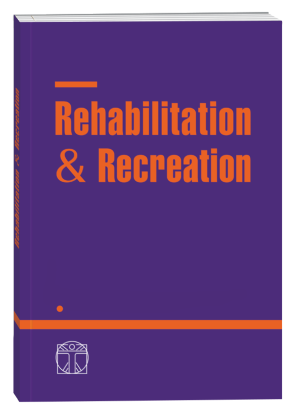PERIODIZATION OF THE TRAINING PROCESS: COMPARATIVE ANALYSIS OF TWO MODELS THROUGH THE PRISM OF MODERN RESEARCH ПЕРИОДИЗАЦИЯ ТРЕНИРОВОЧНОГО ПРОЦЕССА: СРАВНИТЕЛЬНЫЙ АНАЛИЗ ДВУХ МОДЕЛЕЙ ЧЕРЕЗ ПРИЗМУ СОВРЕМЕННЫХ ИССЛЕДОВАНИЙ
Анотація
In this article, two known models of the periodization of the training process are compared: linear and wave. Their effectiveness is analyzed from the point of view of various variables. The narrative review presented in detail examines all the experimentally conducted science works and thereby allows readers to broaden their horizons on this topic. The strengths and weaknesses of both periodic models were identified and outlined.
Посилання
Matveev L.P. On the periodization of sports training // Theory and practice nat. culture. - 1958. - T. XXI. - Вып. 4. - P. 241-246.
Vorobiev A.N. Weightlifting sports. Essays on physiology and sports training. Ed. The 2 nd. M., "FiS", 1977. - 255 p., Ill.
Platonov V.N. Theory of the periodization of sports training throughout the year: background, state, discussions, ways of modernization // Theory and practice of physical culture. - 2009. - No. 9. - P. 18-34
Matveyev LP Basics of sports training. - Moscow: Physical training and sports, 1977. - 208 p.
Verkhoshansky Yu.V. Horizons of the scientific theory and methodology of sports training / / Theory and practice of physical culture. - 1998. - No. 7. - P. 41-54.
Verkhoshansky Yu.V. Towards a scientific theory and methodology of sports training // Theory and practice of physical culture. - 1998. - № 2. - P. 21-26, 39-42.
Matveyev LP To the discussion on the theory of sports training / / Theory and practice of physical culture. - 1998. - № 7. - P. 55-61.
Bondarchuk A.P. Methods of constructing the periods of development of the sports form. Science and modernity. - 2015. - No. 1 (3). - P. 35-63.
OBryant et al. (1988). Cycle ergometer performance and maximum leg and hip strength adaptations to two different methods of weight-training. Journal of Strength & Conditioning Research.
Kraemer JB. et al. Effects of Single vs. Multiple Sets of Weight Training: Impact of Volume, Intensity, and Variation. Journal of Strength & Conditioning Research (1997).
McGee D. et al. Leg and hip endurance adaptations to three weight-training programs. Journal of Strength & Conditioning Research (1992).
Marx JO. et al. Low-volume circuit versus high-volume periodized resistance training in women. Med Sci Sports Exerc. (2001).
Schiotz, MK. et al. The Short-Term Effects of Periodized and Constant-Intensity Training on Body Composition, Strength, and Performance.Journal of Strength & Conditioning Research (1998).
Kraemer WJ. et al. Physiological changes with periodized resistance training in women tennis players.Med Sci Sports Exerc. (2003).
Ahmadizad S. et al. Effects of short-term nonperiodized, linear periodized and daily undulating periodized resistance training on plasma adiponectin, leptin and insulin resistance. Clinical Biochemistry (2014).
Schoenfeld BJ et al. Effectis of varied versus constant loading zones on muscular adaptations in trained men. Int J Sports Med, 2016; 37(6): 442-7.
Herrick, A.B., Stone, William J. The effects of periodization versus progressive resistance exercise on upper and lower body strength in women. Journal of Strength & Conditioning Research (1996).
Baker D. et al. Periodization: The Effect on Strength of Manipulating Volume and Intensity. Journal of Strength & Conditioning Research (1994).
Stone MH. et al. Comparison of the Effects of Three Different Weight-Training Programs on the One Repetition Maximum Squat. Journal of Strength & Conditioning Research (2000).
Peterson MD. et al. Undulation training for development of hierarchical fitness and improved firefighter job performance. J Strength Cond Res (2008).
Souza EO. et al. Early adaptations to six weeks of non-periodized and periodized strength training regimens in recreational males. J Sports Sci Med (2014).
Kok LY. et al. Enhancing muscular qualities in untrained women: linear versus undulating periodization. Med Sci Sports Exerc. (2009).
Prestes J. et al. Understanding the individual responsiveness to resistance training periodization. Age (2015).












